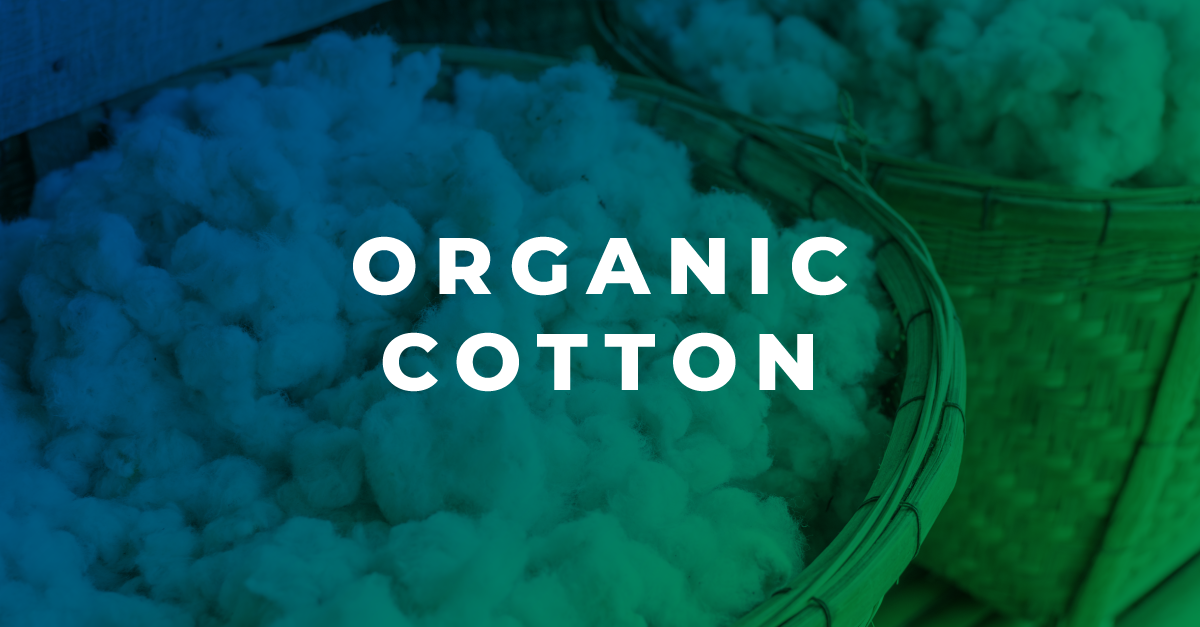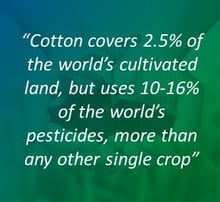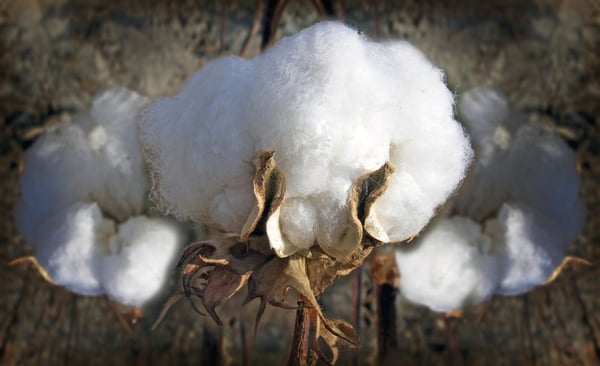
As part of our ASL One World initiative, we're creating a series of blogs about sustainable materials. In today’s article we discuss cotton, organic cotton and how they compare when it comes to their environmental footprint. Many everyday items, such as shirts, bags, sheets etc. are produced with cotton or organic cotton.
COTTON
Cotton is one of the oldest recorded fabrics used by mankind, with evidence of it being used over 7000 years ago in Mexico. It is native to tropical and subtropical regions around the world, including the Americas, Africa, Egypt and India. The greatest diversity of wild cotton species is found in Mexico, followed by Australia and Africa. Striping machines harvest the crop from the fields and store it in modules. The cotton seed is put in a machine called the ‘gin’ which cleans it from dirt, stems and leaves, and the gin’s circular saws separate the fibre.
The fibre is most often spun into yarn or thread and used to make a soft, breathable textile. The use of cotton for fabric is known to date to prehistoric times; fragments of cotton fabric dated to the fifth millennium BC have been found in the Indus Valley Civilization, as well as fabric remnants dated back to 6000 BC in Peru. Although cultivated since antiquity, it was the invention of the cotton gin that lowered the cost of production and led to its widespread use; it is the most widely used natural fibre cloth in clothing today. Currently, world production is estimated to about 25 million tonnes (or 110 million bales) annually, accounting for 2.5% of the world's arable land, with India being the world's largest producer of cotton.
While cotton fibres occur naturally in colours of white, brown, pink and green, fears of contaminating the genetics of white cotton have led many cotton-growing locations to ban the growing of coloured cotton varieties.
Ecological Footprint

Cotton covers 2.5% of the world's cultivated land but uses 10-16% of the world's pesticides (including herbicides, insecticides, and defoliants), more than any other single major crop. Environmental consequences of the elevated use of chemicals in the non-organic cotton growing methods include pollution of the air and surface waters and decreased biodiversity in ecosystems.
Organic cotton
Organic cotton is generally defined as cotton that is grown organically in subtropical countries such as India, Turkey, China, and parts of the USA from non-genetically modified plants, and without the use of any synthetic agricultural chemicals such as fertilizers or pesticides, aside from the ones allowed by the certified organic labelling. Its production is supposed to promote and enhance biodiversity and biological cycles[1][2].
In most cases it is required by law that any producer wanting to label and sell a product as "organic" must meet the specific standards regarding the procedures and regulations for production and the handling of crops. The Global Organic Textile Standard (GOTS) is the worldwide leading textile processing standard for organic fibres, including ecological and social criteria.
Numerous studies have emerged which argue the pros and cons of conventional and organic cotton farming.

Cotton remains a resource, labour, and energy intensive agriculture crop to grow. 2.4 % of the world’s arable land in countries such as India, the United States, Pakistan and China is dedicated to cotton farming. But at the same time, cotton farming also accounts for 24% of the global sales of insecticide and 11% of the global sales of pesticides. It takes approximately 20,000 litres of water to grow 1 kilogram of cotton, enough to make a single pair of jeans and a t-shirt.
Is Organic Cotton really more Environmentally Friendly than Conventional Cotton?
It is frequently argued that organic cotton is better for the environment, compared to conventional cotton, due to the lack of chemical pesticides and insecticides during its production. Conventional cotton farming uses a number of the pesticides and insecticides that contain strong chemical agents which are subsequently released into the environment and have adverse effects on ecosystems, as well as on the farmers’ health and surrounding communities. Since organic cotton is grown without using these chemicals it is often seen as more environmentally friendly than conventional cotton.
However, organic cotton's farming does allow for the use of natural and synthetic pesticides in moderate quantities. In turn, these natural pesticides can also be harmful. For example, a study funded by the Natural Science and Engineering Council of Canada on four synthetic and two organic insecticides found the two organic insecticides to have a significantly higher toxicity than the synthetic counterparts.
One of the main arguments as to why organic cotton farming is not necessarily better for the environment is linked to yield. Conventional cotton varieties retain a higher yield, meaning a single cotton plant produces more fibre than its organic cotton counterpart because it has been genetically engineered to do so. Cotton Inc.’s research[3] shows that cotton yields have increased 42% over the last 35 years, due to improvements in irrigation techniques and biotechnology. As organic cotton comes from plants which have not been genetically modified, a farmer who wishes to obtain the same fibre yield from conventional cotton plants using organic ones will have to sow more plants. This means they will have to use more land, which needs to be tended to and irrigated, using more water and resources to grow the cotton.

Another important aspect to take into account is the cotton supply chain. Before cotton, conventional or organic, can be turned into a garment it must be spun into thread, made into a fabric, dyed, stitched together and finished - processes which all include a number of resources, labour, and energy inputs/outputs.
All these processes tend to take place in different locations, which means that cotton must also be transported from place to place, increasing its carbon footprint. The dying and the finishing of any garment remain the most environmentally damaging and chemically intensive steps in making a garment[4].
So while it can be said that organic cotton is a positive initiative, its real environmental impact is dependent on farm efficiency, technologies, production methodologies and location.
[1] https://www.soilassociation.org/organic-living/fashion-textiles/organic-cotton/
[2] http://aboutorganiccotton.org/
[3]https://www.cottoninc.com/cotton-production/
[4] http://aboutorganiccotton.org/organic-certification/ and about labelling here https://www.global-standard.org/licensing-and-labelling/how-to-get-products-labelled.html
Are you looking for innovative, sustainable marketing services support? Contact us to discover how ASL can help your marketing campaigns become more environmentally sustainable and socially responsible.

Discover more about our ONE WORLD initiative








